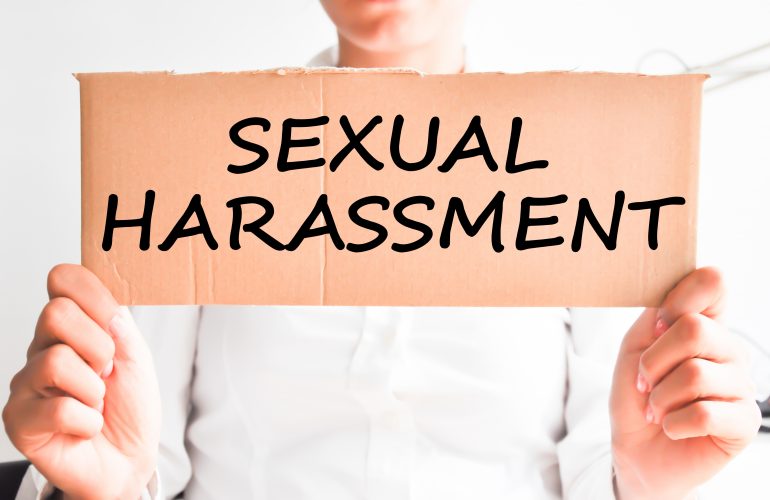Sexual harassment in the Workplace is no laughing matter – just ask anyone in Hollywood these days. Every time I turn on cable news there are more allegations of sexually inappropriate behaviors and unwanted advances from someone. But, Hollywood isn’t the only place these behaviors occur. In almost every workplace, there are various forms of sexually explicit behaviors happening, either privately or publicly.
Sexual harassment is a form of discrimination. It can also be viewed as a form of bullying and coercion. Regardless what we call it, this type of behavior violates Title VII of the Civil Rights Act of 1964. We need to take sexual harassment seriously. Typically, it occurs when one employee makes unwelcomed and continued sexual advances or requests for sexual favors. It also involves verbal or physical sexual behavior against the wishes of the employee.
The U.S. Equal Employment Opportunity Commission (EEOC) states that sexual harassment occurs “when submission to or rejection of this conduct explicitly or implicitly affects an individual’s employment [and] unreasonably interferes with an individual’s work performance or creates an intimidating, hostile or offensive work environment”.
Looking for Easy, Online CEUs?
Find Leadership CEUs and many other subjects to fulfill your CE requirements.
Try a FREE CEU!
Examples of Sexual Harassment
What one person finds funny, another finds offensive. Although, at times, there is a thin line between appropriate humor and inappropriate behavior, it is best to play it safe. Unwanted jokes, gestures or offensive words are common examples of sexual harassment. Inappropriate touching or bodily contact are others. Rubbing a coworkers back at work is completely inappropriate and should not occur. Grabbing a coworker around the waist is another no-no. If you ask for dates and repeatedly get turned down – stop. Flirting at work is not acceptable either.
Destroyed by Social Media
One of the best ways to lose your job, and probably your license, is to send sexually inappropriate emails, texts, or photos to your colleagues. Posting inappropriate material on social media is another way. You might think that healthcare professionals would know better, but social media is a powerful lure. Once your material is available on a cellular phone or online, it can be posted and resent over and over again to countless people. The bottom line – don’t do it.
You Have Responsibilities
Although employers have a duty to prevent sexual harassment and provide a safe, anti-harassment work environment, employees must also play their part in the prevention of sexual harassment in the workplace. You need to be aware of your facility’s policies and procedures. Examine your own attitudes about sexual harassment. You also need to know what is considered appropriate and inappropriate behavior at work.
Observe your workplace. What do you see? It is o.k. to be a little extra sensitive to employees who may be offended by certain humor or language. Be aware of the most subtle forms of sexual harassment and avoid them. Discourage these types of behaviors. Always avoid intentionally offending someone at work. If you make a verbal slip – apologize. Most people are rather forgiving. Never assume that your colleagues want to hear sexually inappropriate comments. Before saying something, ask yourself if it is offensive.
Final Words on Sexual harassment in the Workplace
The best way to get in trouble is by saying the wrong things to the wrong people. So, be smart. There is a time and place for everything, so keep the sexually explicit language and behavior out of your workplace. You are there to provide care and focus on your patients, residents, or clients. Sexual harassment simply has no place in senior care – so keep it out!
More About Leadership
- Leadership in Health Care: The Truth and the Bull
- Workplace Bullying in Health Care
- Improving Communication in the Workplace
- Understanding and Using the Law of Attraction
- Reducing Hospital Readmissions
- Workplace Success and the Power of Trust and Genuine Relationships
Looking for Easy, Online CEUs?
Find Hospice CEUs and many other subjects to fulfill your CE requirements.
Click here for Leadership CEUs

